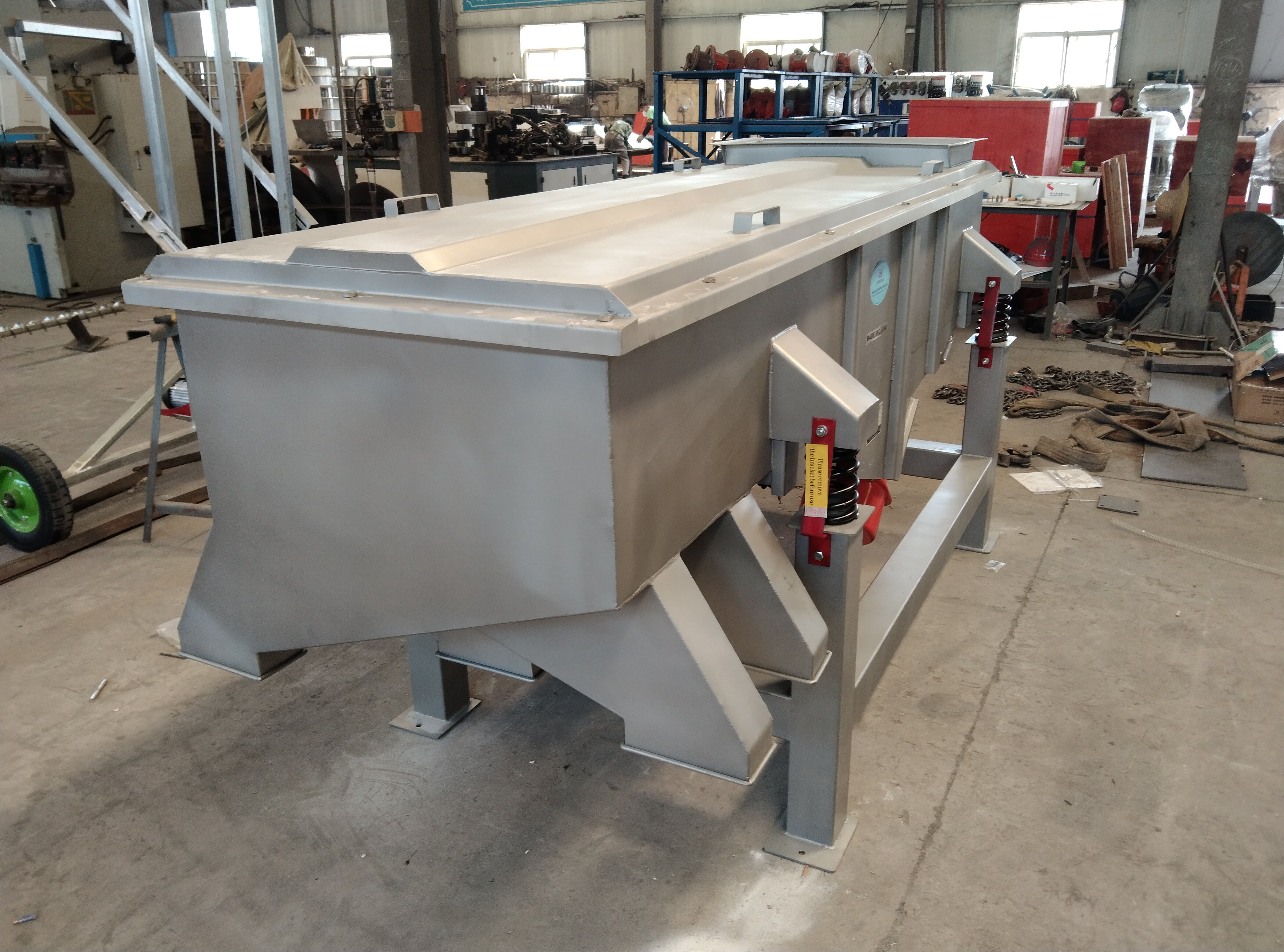
Vibrating screening machine for clay is a special grading equipment designed for the processing characteristics of non-metallic minerals. Its technical system covers three types: circular vibrating screen, linear vibrating screen and ultrasonic vibrating screen, which can meet different particle size control requirements. The equipment screening mesh covers the full range of 0-625 mesh. The equipment selection needs to be combined with the material moisture content, viscosity and process mesh requirements. For example, clay slurry with a moisture content of more than 8% should use a circular vibrating screen, while fine powder processing requires an ultrasonic screening system with a titanium alloy transducer.

Classification of Vibrating Screening Machine for Clay
Circular Vibrating Screen
The circular vibrating screen adopts the eccentric block excitation principle, and generates centrifugal force through the motor to drive the eccentric shaft to drive the screen box to move in a circular trajectory. Its structural features include: single-axis or dual-axis exciter configuration, tubular or block eccentric mass adjustment device, rubber spring or metal spring support system. This type of equipment has three major advantages in clay processing: first, the circular motion trajectory makes the material present a throwing-like flip, effectively preventing the screen hole from being blocked; second, the large-angle screen surface design (15°-25°) can achieve rapid screening, and the processing capacity is increased by 15%-20% compared with the linear screen; third, the modular screen frame supports rapid replacement to meet the needs of different particle size classification. The typical application scenario is the classification of coarse concentrate in the preparation of ceramic raw materials, which can process clay slurry with a moisture content of ≤8%.
Linear vibrating screen
The linear vibrating screen generates a linear excitation force through the reverse synchronous rotation of dual motors, driving the screen box to reciprocate linear motion. Its technical features are reflected in: dual-mass vibration system design, adjustable amplitude control mechanism (amplitude range 3-6mm), and segmented screen surface structure. In clay processing, this type of equipment has three technical advantages: first, the composite vibration mode in the horizontal and vertical directions makes the material produce micro-jumping motion, and the screening efficiency can reach more than 90%; second, the multi-layer screen frame configuration (up to 5 layers) can simultaneously achieve 2-6 particle size classifications; third, the fully enclosed structure cooperates with the negative pressure dust removal system to effectively control dust emission. It is suitable for continuous production scenarios such as construction sand grading adjustment and refractory raw material grading.

Ultrasonic vibrating screen
The ultrasonic vibrating screen integrates a 20-40kHz high-frequency transducer device on the basis of the traditional vibration source, and generates micron-level ultrasonic vibration through the screen surface. Its technical breakthroughs include: titanium alloy transducer, digital frequency tracking system, and polyurethane composite screen. In view of the characteristics of clay materials, this equipment solves two major technical problems: first, ultrasonic vibration energy can destroy the surface tension of the material and eliminate the agglomeration of fine particles below 0.075mm; second, the screen opening rate is increased to 45%, which is 30% higher than the conventional screen efficiency. It is particularly suitable for the refining of fine clays such as kaolin and bentonite, and can stably achieve the classification of particles above 325 mesh (0.044mm).
Screening mesh of vibrating screening machine for clay
0-50 mesh (above 0.297mm)
Applicable scenarios: Preliminary classification of coarsely crushed clay, such as ceramsite for construction, roadbed materials, etc.
Screening situation: This mesh range is mainly used to remove large impurities and incompletely crushed particles in clay. In the production of building ceramsite, 0-50 mesh clay particles are used as aggregates to provide good support structure and strength. Screening equipment usually uses a circular vibrating screen, which is designed with a large angle screen surface to achieve rapid screening and increase processing capacity.
50-100 mesh (0.147-0.297mm)
Applicable scenarios: Classification of medium-sized clay, such as ceramic body raw materials, refractory aggregates, etc.
Screening situation: Clay particles in this mesh range have good plasticity and bonding properties, and are suitable for the molding of ceramic green bodies and the preparation of refractory materials. The screening equipment can use a linear vibrating screen, and through the multi-layer screen frame configuration, it can achieve simultaneous grading and improve production efficiency.
100-200 mesh (0.074-0.147mm)
Applicable scenarios: Grading of fine-grained clay, such as paper coating pigments, drilling mud raw materials, etc.
Screening situation: Clay particles in this mesh range have a smaller particle size and a larger specific surface area, which are suitable for the preparation of paper coating pigments and drilling mud. The screening equipment needs to use an ultrasonic vibrating screen to destroy the particle agglomeration phenomenon through high-frequency vibration and improve the screening efficiency.
200-325 mesh (0.044-0.074mm)
Applicable scenarios: Grading of fine clay.
Screening situation: Clay particles in this mesh range have a smaller particle size and excellent dispersibility. Screening equipment needs to use high-precision ultrasonic vibrating screens to achieve fine particle classification by controlling screening parameters.
In summary, the 0-50 mesh section of the Vibrating Screening Machine for Clay is suitable for the classification of coarse particles such as building ceramsite and roadbed materials. The throwing motion of the circular vibrating screen can achieve rapid separation of large-size materials and impurities; the 50-200 mesh section serves the medium-size control of ceramic blanks, refractory aggregates, etc. The multi-layer screen frame design of the linear vibrating screen can simultaneously complete 2-5 types of particle size classification; the finer areas above 200 mesh rely on ultrasonic vibrating screens to break the agglomeration of fine particles through high-frequency vibration.